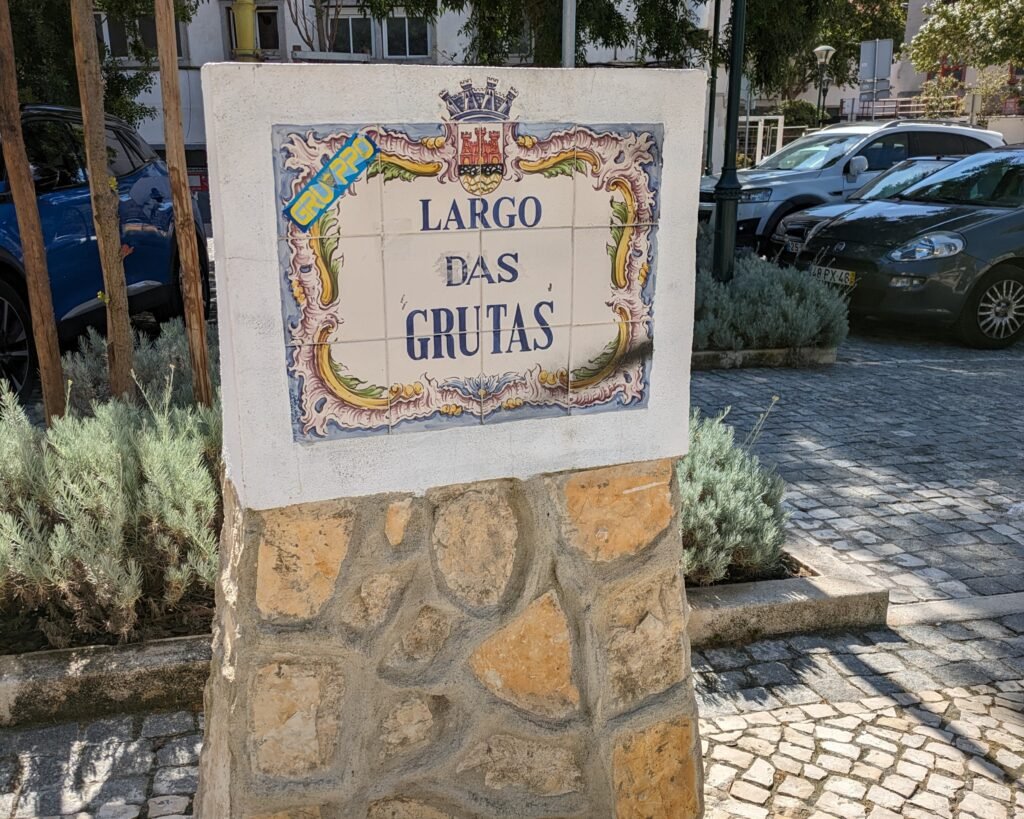In Portuguese: Grutas do Poço Velho
Under the bustling town, lies a twisting labyrinth of limestone karst caves. Feel the cold, smooth stone as you duck your head: those stones have been worn away by humans for tens of thousands of years. Look into the rounded nooks: people have lain their departed loved ones there. This space, under the cars and cafes and street vendors, is a cool, quiet spot that has been visited by many generations of humans, from early hunter-gatherers to modern urban dwellers.






1.6 million years ago, water seeped into the limestone and formed caves. They’ve been visited and used by human beings for thousands of years. The seaside town of Cascais grew up above them. Today, they’ve been made accessible with wooden walkways and electric lights. It’s a fun experience to scramble (crouch, sometimes crawl) through these caves beneath the bustling seaside town!
There is some evidence1 the caves were in use during the Upper Paleolithic period (22,000-18,000 years ago), but the limited evidence (only three pieces of worked stone) suggests that they were only used by hunters as a temporary shelter. Around 6,000 years ago they started being used more frequently, mostly for entombments. The most intense period of use was from around 3,500 BC/BCE through to 2,500 BC/BCE. Many artefacts from this period have been discovered, including decorative jewelry, votive objects, as well as pottery, stone artefacts, and human remains. Traces of red ochre (commonly used in burial practices during that age) have been found. There are sporadic artifacts dated from the Bronze Age and Iron Age and even into modern history which shows that the caves were being used occasionally throughout history. (The slogan is “Cascais began here!”)
The caves were first excavated in 1879 by Carlos Ribeiro, and then again in the 1940’s by Manuel Afonso do Paço and Agusto Abreu Nunes. Most of the artefacts which were found are displayed in the Cascais Town Museum or in the Geological Museum in Lisbon. Electrical cables were first strung through the caves to provide lighting during the 1940s. The municipality of Cascais has recently refurbished the caves, including the addition of wooden walkways (or crawl-ways).
Location
Cascais is a coastal town in the Lisbon district, east of Lisbon. The entrance to the caves is in central Cascais, in the Largo das Grutas. It’s behind the Garden of Visconde de Luz.
Access
The caves are only open holidays and weekends, during the summer months, from 10h00 to 13h00. During the winter, it’s only open during the first Sunday of the month. (Check the Cascais website to be sure.) You will be given a hardhat to wear (and return!) and a disposable liner. The caves can be narrow and low. It’s not recommended for people with claustrophobia or mobility issues.
Signage
There are no signs directing you to the caves. From the Garden of Visconde de Luz, go out the rear of the gardens (away from the merry-go-round) past the restaurante Visconde de Luz. Turn right (on Rua Carlos Ribeira) and the caves will be on the left about 100m down.

Links
- Entry (in English) from the Megalithic Portal
- Article (in English) from Wikipedia
- Virtual Tour (in English) from the Town Hall of Cascais
- Video (in Portuguese) from RTP
- Description (in Portuguese) from the Town Hall of Cascais
- Inventory with photos, diagrams, etc. (in Portuguese) from Cultura Cascais
- Designation (in Portuguese) as a Property of Public Interest by the Director-General of Cultural Heritage
Nearby
The Cascais Town Museum has information and artefacts retrieved from the caves. There are plans to build an interpretive center in nearby Estoril, covering these caves and the ones in Alapraia.
References
(The cited book by Victor S. Gonçalves was invaluable in preparing the information on this page.)
- Gonçalves, Victor S. As Ocupações Pré-Históricas Das Furnas Do Poço Velho (Cascais). Câmara Municipal de Cascais, 2009. ↩︎

Pingback:Town Museum of Cascais - Prehistoric Portugal
Pingback:Artificial Caves of Alapraia - Prehistoric Portugal